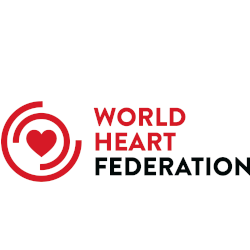Research
Heart Failure in NCVC Jakarta and 5 hospitals in Indonesia
Abstract
Indonesia is an archipelago consisting of 17,000 islands (6000 inhabited) to spanning by the equator in South East Asia. The total area is 741,096 sq mil (1,919,440 km sq). The population in 2005 was 241,973,879, with a population growth rate of 1.5%, a birth rate of 20.7/1000 population and a life expectancy of 69.6 years. There are 1246 hospitals in Indonesia, of which 49.8% are in private hospitals and 50.5% are located in Java. There is a total of 132,231 beds or one hospital bed per 1628 population.
In 2005 we did a pilot cohort study of 100 consecutive new cases of Acute Decompensated Heart Failure (ADHF) at NCVC Jakarta to search for predictors of mortality and re-hospitalization. We found the independent predictors for mortality and re-hospitalization are high NT proBNP at entry, NT proBNP at discharge, not decreased >35% during hospitalization, NYHA functional class 4, edema with a BMI >30 kg/m2, ejection fraction <20%, acute pulmonary edema, not on a beta-blocker, hemoglobin <12 g/dl and Hyponatremia <130 mmol/L. More than 78% using ACEI/ARB, diuretic and aldosterone antagonist, but only 32% using beta-blocker.
In 2006, we conducted an Acute Decompensated Heart Failure Registry (ADHERE) with the participation of five hospitals including National Cardiovascular Center (NCVC) Jakarta, the top cardiovascular referral hospital. In total, there were 1687 patients admitted with ADHF. The mean age was 60 years and male patients were 64.5%. Compared to other countries, our heart failure patients were younger, had more severe symptoms and there were more new patients (de novo acute ADHF). Hypertension (54.8%), coronary artery disease (49.9%), diabetes (31.2%), myocardial infarction (23.3%) and atrial fibrillation (14.6%) are the leading etiologies of our ADHF patients. There were 62.7% patients with ejection fraction (EF) <40% and the mean EF was 33%. The median hospital length of stay was 7.1 days and the hospital mortality was 6.7% [15].
In NCVC Jakarta, compliance with medical evaluation and drugs and diets are the predictors of hospitalizations. There were 47%, non compliant patients and the survival probability at 5 years was only 54%. The 5 year predictors of mortality are poor EF, Diabetes and male gender. The 5 year survival of males with poor EF and Diabetes was only 36%. Among socio-economic factors, only 33.5% had health insurance and 54.5% lived >20 km from hospital [16].
There are increasing numbers of hospitalized heart failure patients in NCVC Jakarta. In 2007 there were 1409 patients and an increase in 2008 to 1476 hospital admissions. Also there has been an increase in in-hospital morality to around 12 %.
Conclusion: Heart failure is a leading cause of hospitalization and readmission in NCVC. Indonesian heart failure patients were younger, sicker, with a poor EF and Diabetes compared to others. The in-hospital mortality ranges from 6% to 12% and the re-hospitalization rate is 29%. Poor compliance, poor EF and Diabetes are the predictor for readmission. Health insurance improves survival probability. There is a need for better heart failure services.


